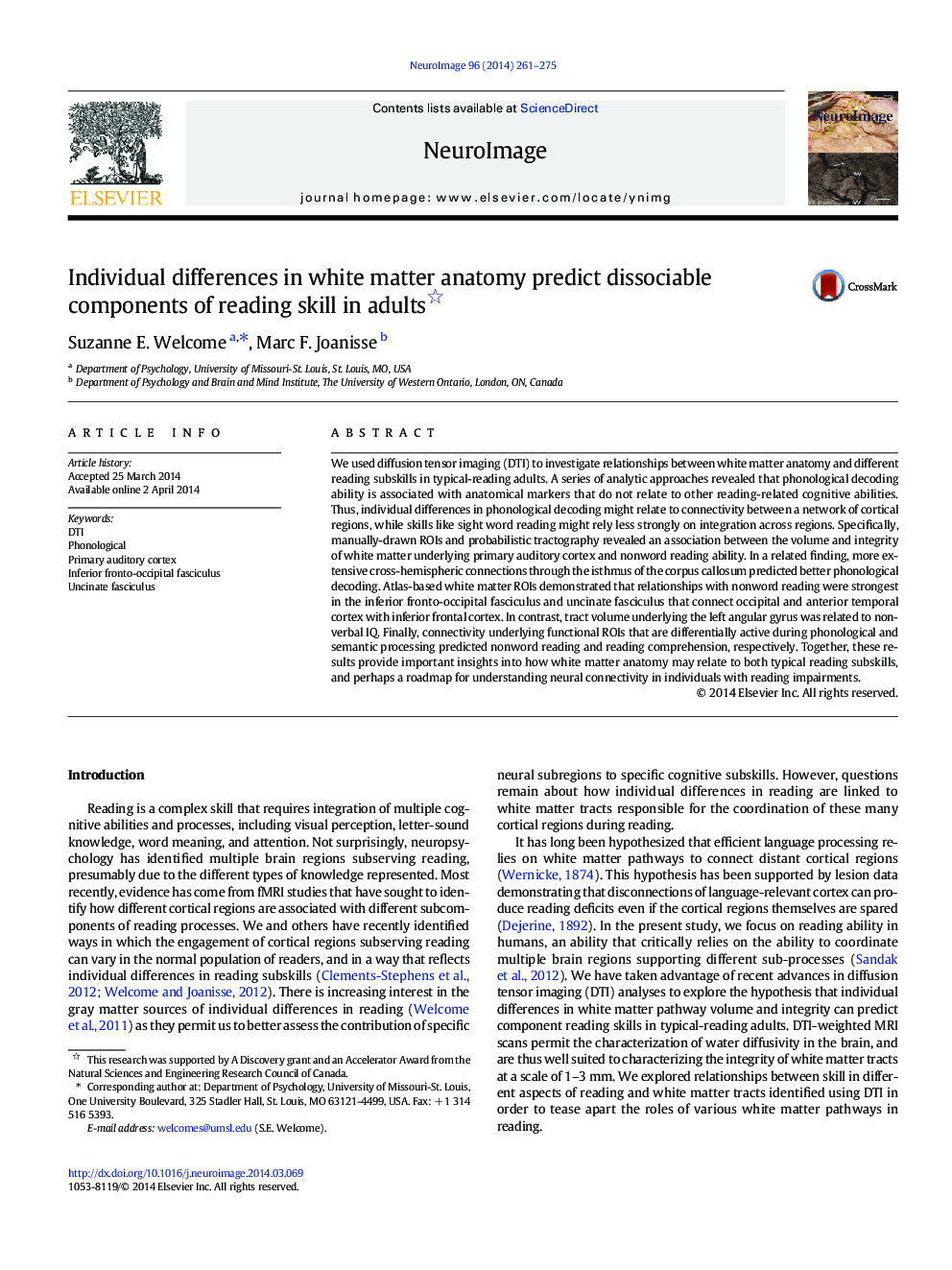| Article ID | Journal | Published Year | Pages | File Type |
|---|---|---|---|---|
| 6027212 | NeuroImage | 2014 | 15 Pages |
Abstract
We used diffusion tensor imaging (DTI) to investigate relationships between white matter anatomy and different reading subskills in typical-reading adults. A series of analytic approaches revealed that phonological decoding ability is associated with anatomical markers that do not relate to other reading-related cognitive abilities. Thus, individual differences in phonological decoding might relate to connectivity between a network of cortical regions, while skills like sight word reading might rely less strongly on integration across regions. Specifically, manually-drawn ROIs and probabilistic tractography revealed an association between the volume and integrity of white matter underlying primary auditory cortex and nonword reading ability. In a related finding, more extensive cross-hemispheric connections through the isthmus of the corpus callosum predicted better phonological decoding. Atlas-based white matter ROIs demonstrated that relationships with nonword reading were strongest in the inferior fronto-occipital fasciculus and uncinate fasciculus that connect occipital and anterior temporal cortex with inferior frontal cortex. In contrast, tract volume underlying the left angular gyrus was related to nonverbal IQ. Finally, connectivity underlying functional ROIs that are differentially active during phonological and semantic processing predicted nonword reading and reading comprehension, respectively. Together, these results provide important insights into how white matter anatomy may relate to both typical reading subskills, and perhaps a roadmap for understanding neural connectivity in individuals with reading impairments.
Keywords
Related Topics
Life Sciences
Neuroscience
Cognitive Neuroscience
Authors
Suzanne E. Welcome, Marc F. Joanisse,
